- Stat Significant
- Posts
- The Business of the Olympics: Rising Revenues, Diminishing Cultural Reach. A Statistical Analysis
The Business of the Olympics: Rising Revenues, Diminishing Cultural Reach. A Statistical Analysis
How does the Olympics remain relevant (and make money) in a world full of digital distractions?
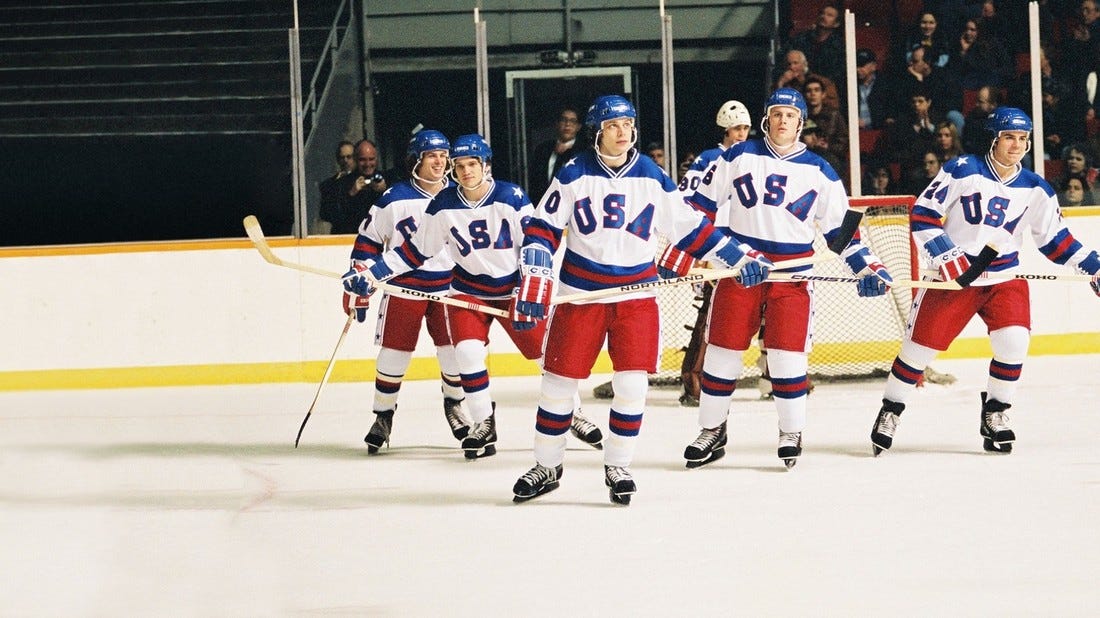
Miracle (2004). Credit: Disney Studios.
Intro: Why Were the 1994 Olympic Games So Popular?
The 1994 Lillehammer Games holds the record for primetime Olympics viewership in the United States, with a reported 43M Americans tuning in to watch nightly coverage of the Winter Games.
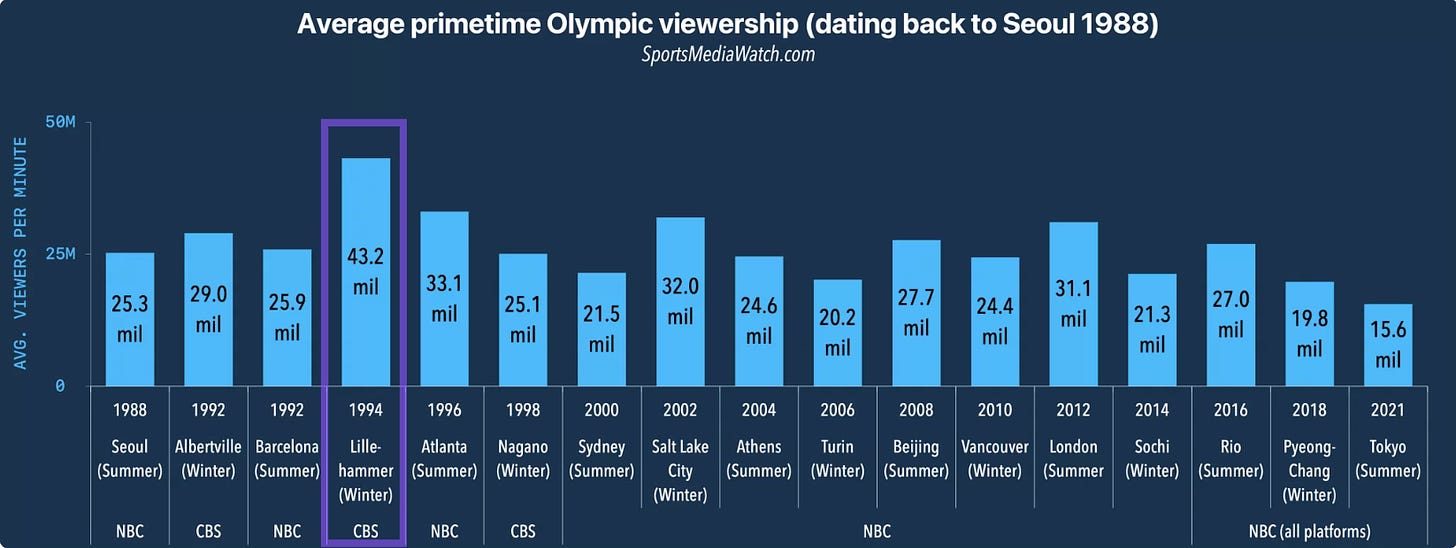
Source: Sports Media Watch.
This statistic is notable for two reasons:
The Winter Games usually receive significantly less viewership than the Summer Olympics.
I assume more people are watching TV (and, therefore, the Olympics) in the 2000s and 2010s.
So, what caused this spike?
After going down an extensive Wikipedia rabbit hole on the "1994 Lillehammer Games," I was stumped—there was nothing particularly revolutionary about this Olympiad (just your standard Norway-hosted amateur athletics event). Maybe people were bored and had nothing better to do.
It was at this point that I, a fallible human of limited knowledge, gave up and subsequently outsourced my research to an AI chatbot. Within two seconds of logging my query, I had my answer: the 1994 Olympic Games was the year of the Tanya Harding - Nancy Kerrigan scandal. This uptick in viewership was not the product of a hotly contested medal event or display of national pride but rather the result of a man hitting an innocent woman with a metal baton. Tens of millions of Americans tuned in to follow the scandal, the way one would track national politics or reality television.
The popularity of the Lillehammer Games (and its bizarro outlier status) got me thinking about Olympics viewership and the games' role as a distinctive pop culture curio. Every two years, this global sporting event parachutes into our lives, its consumption heavily informed by changes in media technology and home entertainment programming. Consider how much the world (and television) changed between the 2016 and 2020 Summer Games. So how has Olympics engagement fared in a world of ever-proliferating digital distraction and prestige television? Has the cultural footprint of the Olympic Games expanded or diminished in the age of Netflix, YouTube, and TikTok?
Have the Olympic Games Grown Their Cultural Footprint (and Bottom Line)?
The International Olympic Committee (IOC) is a global non-profit organization that governs the Olympic Games. The IOC's main responsibility is to coordinate and fund "the Olympic Movement," which it accomplishes by monetizing broadcast rights, securing sponsorships, and licensing its brand. These lucrative partnerships fund training programs and athlete scholarships while covering the costs of organizing the Olympics.
And what drives multi-billion dollar advertising and broadcast deals? A killer pitch deck. 😎
In the case of the IOC, this pitch deck takes the form of a 200-page marketing report, an odd combination of Olympic pride and data dump—a window into the business of the Olympics. And how is business doing? Good (mostly).
The IOC and Olympic host country monetize the games through a variety of methods, including:
Broadcasting Revenue: Generated from selling exclusive media rights to television and digital platforms worldwide, such as NBC's $7.75B purchase of media rights from 2021 to 2032.
The TOP Global Partnership Program: The Olympic Partner (TOP) program involves multinational corporations securing exclusive global sponsorship rights to the Olympic Games, such as Coca-Cola or Airbnb partnering with the IOC across multiple Olympiads.
Domestic Advertising Partnerships: The host country can negotiate sponsorship deals with locally based companies, such as when the Tokyo Games secured partnerships with Japanese firms like Asics, Japan Airlines, and Canon.
Ticketing: The IOC and host country collect revenues from the sale of tickets to Olympic events.
Licensing: The Olympic brand can be licensed for use in various products, including t-shirts, pins, and hats.
Revenues from domestic advertising, licensing, and ticket sales go to the host nation, compensating for the logistical challenges of hosting the event, while all other earnings are distributed to the IOC. Since the early 1990s, the Olympic Games have increased revenues from $2.6 billion to $10.8 billion, a growth rate that significantly outpaces inflation.

What I find fascinating about these figures is the recent uptick in sponsorship revenues during the last Olympiad cycle. This business is growing much faster than the monetization of broadcasting rights. So, what's driving this surge in sponsorship dollars?
The answer to this question lies in contradictory macroeconomic forces: the Olympic Games are both declining in relevance while remaining an unparalleled global spectacle—a duality we'll explore in more detail.
Over the past 30 years, there has been a decrease in what the IOC calls "global audience reach," which measures the number of people who engage with at least one minute of Olympics content across any medium. The Summer Games have seen successive audience declines, while the Winter Games have dipped or stayed primarily flat.
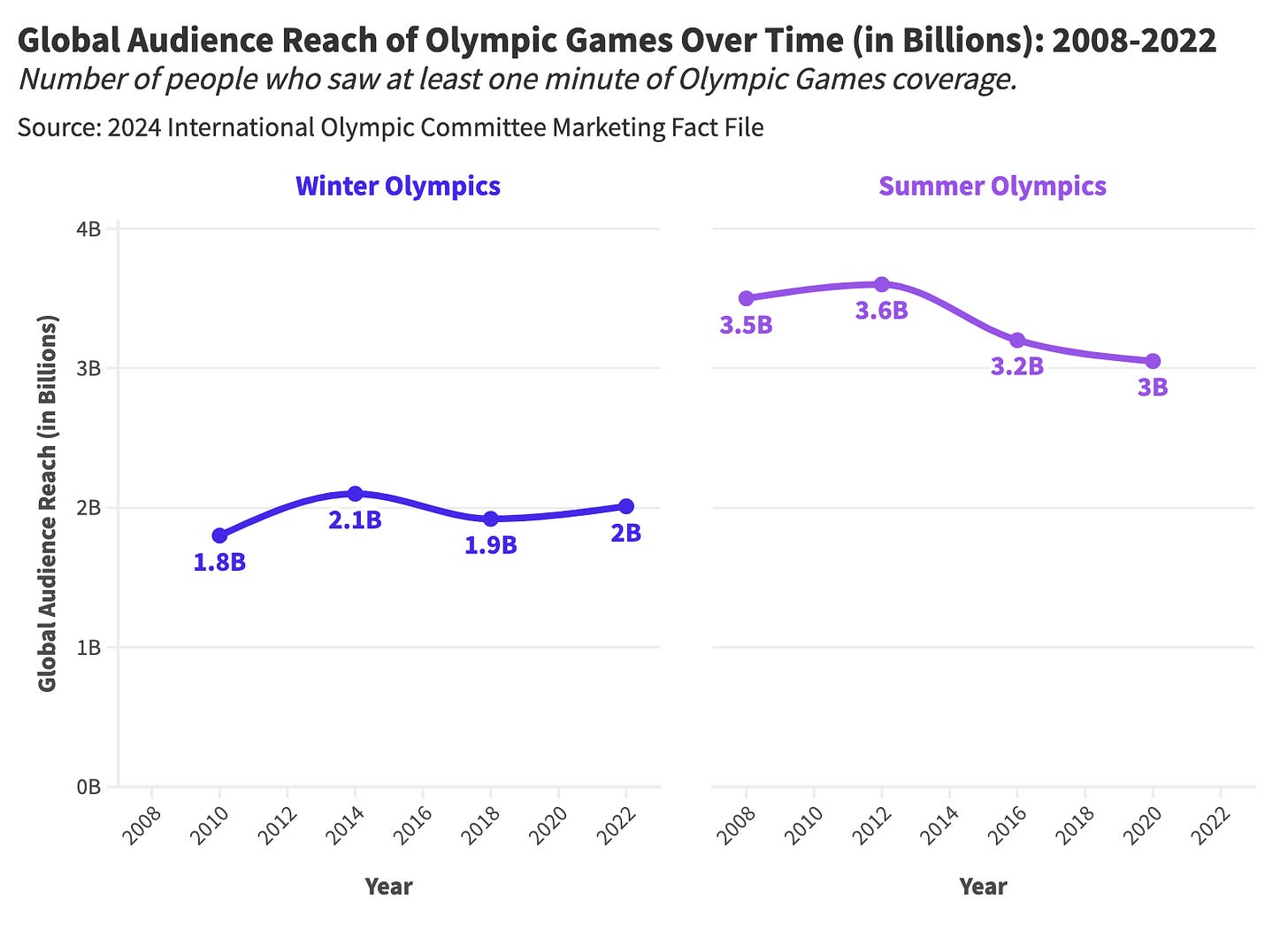
This trend (coupled with the rise of streaming) explains the sagging growth of broadcast revenues, but what is driving the uptick in sponsorship dollars? Wouldn't Coca-Cola want to spend less money if its brand sees diminishing exposure?
Weirder still, the IOC has expanded its coverage of the Olympic Games, producing over 10,000 hours of distributable content for broadcasting partners worldwide in 2020.
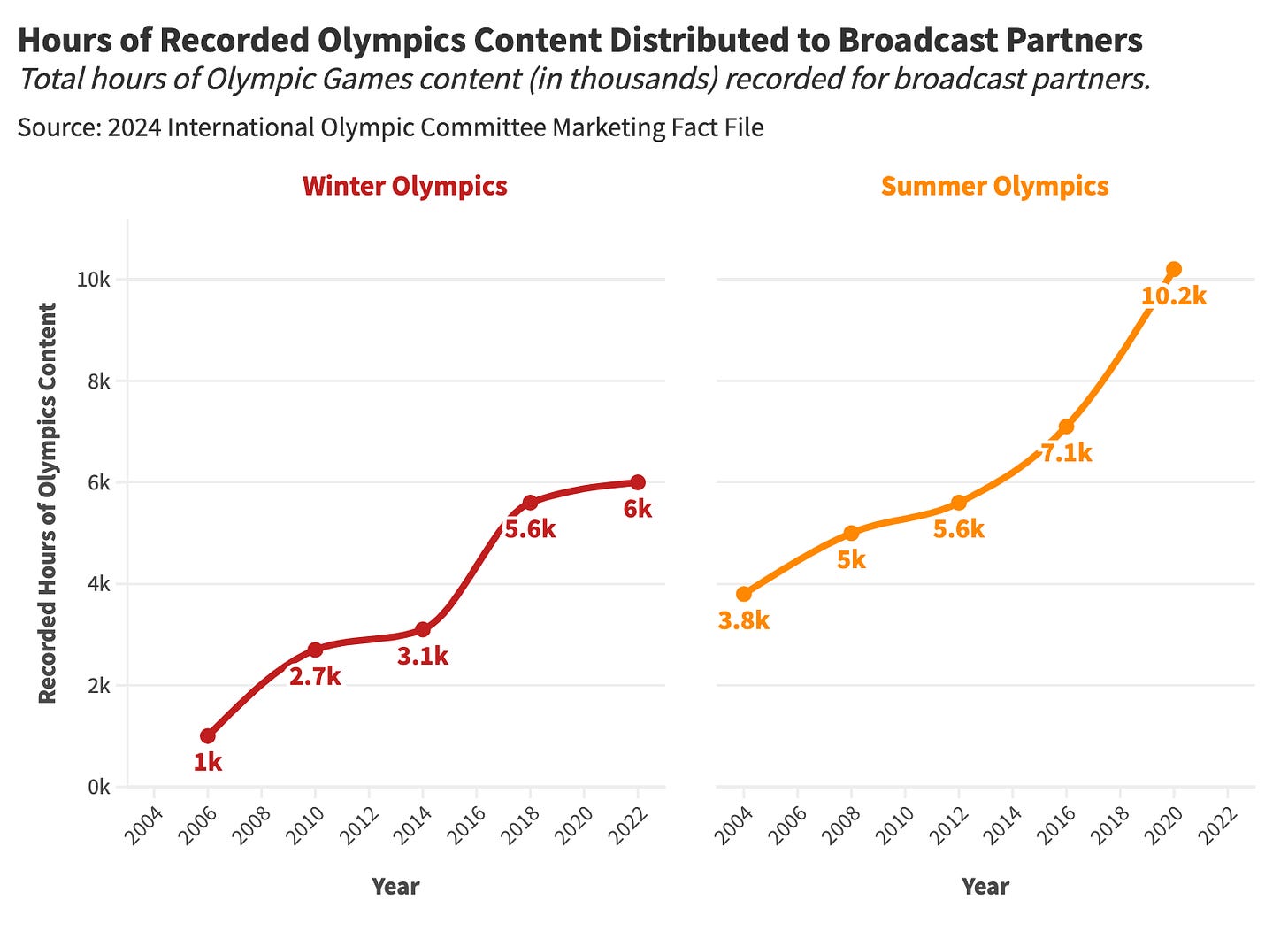
So, to recap, fewer people are watching the games despite increased coverage, and sponsors are willing to pay top dollar for diminishing levels of brand exposure. How is this possible?
These changes are likely adaptations to the increasing digitization of Olympics coverage—a phenomenon that has reduced the games' cultural footprint while (paradoxically) making them more significant.
Need Help with a Data Project?

Enjoying the article thus far and want to chat about data and statistics? Need help with a data or research project? Well, you’re in luck because Stat Significant offers data science consulting services. Reach out if you’d like to learn more!
Email [email protected]
The Digitization of The Olympic Games
During the 2016 Rio Olympic Games, "Saturday Night Live" cast member Leslie Jones gained widespread attention for her enthusiastic (and quite hilarious) live-tweeting of various events. Her social media commentary quickly went viral due to some of the following gems:
"Wish I could ice skate, but I don't want to die."
"The only problem with me learning to swim is getting into booty water. Everybody booty is in the water I don't want my face in that. Sorry"
"THIS IS THE OLYMPICS BABY!!!"
NBC noticed her growing online presence and eventually invited her to Rio to participate in the network's coverage of the games.
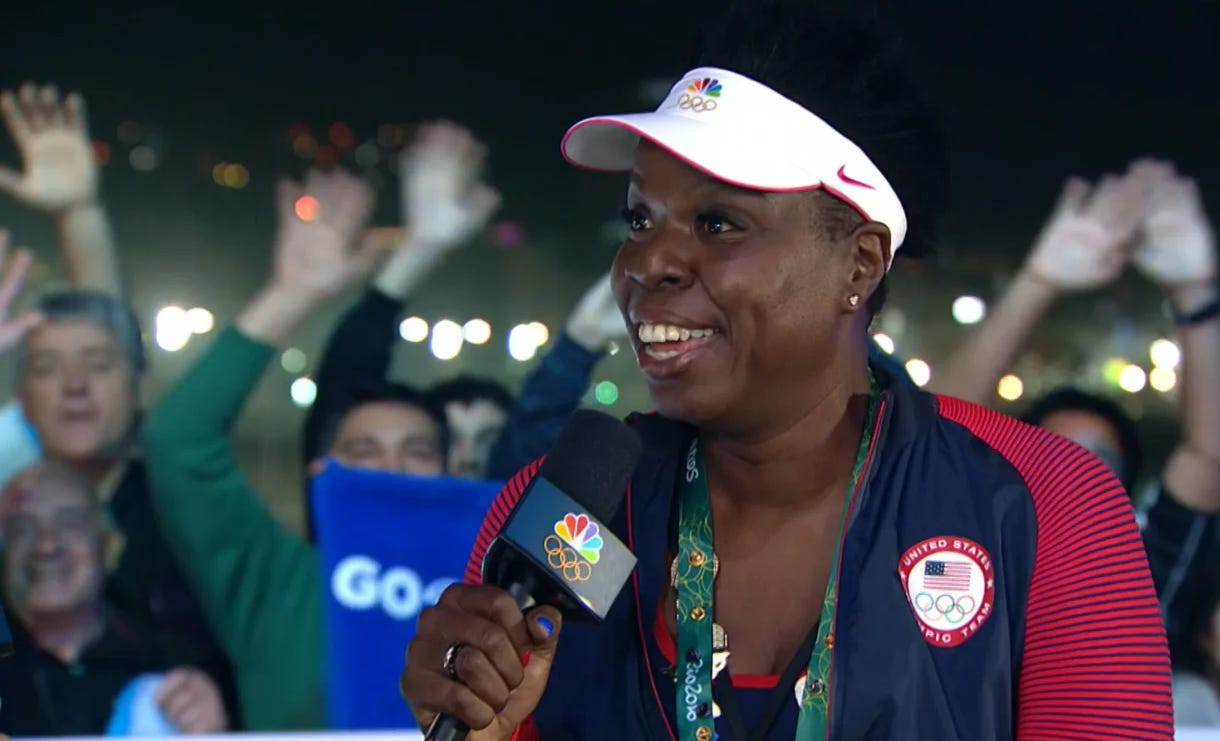
Leslie Jones joining an NBC Olympics telecast. Credit: NBC Universal.
Jones' five-day ascension from comedian to sportscaster is emblematic of the 21st-century Olympics experience—a world in which the games are increasingly consumed online.
In its marketing packet, the IOC makes a clear distinction between "TV" and "digital" coverage. Anything you can watch from a live cable or streaming feed is considered television, while all other mediums fall under the banner of "digital." Over the last twelve years, digital channels such as YouTube, Twitter, and TikTok have slowly subsumed Olympic viewership—the same way these channels have dominated all other forms of media.
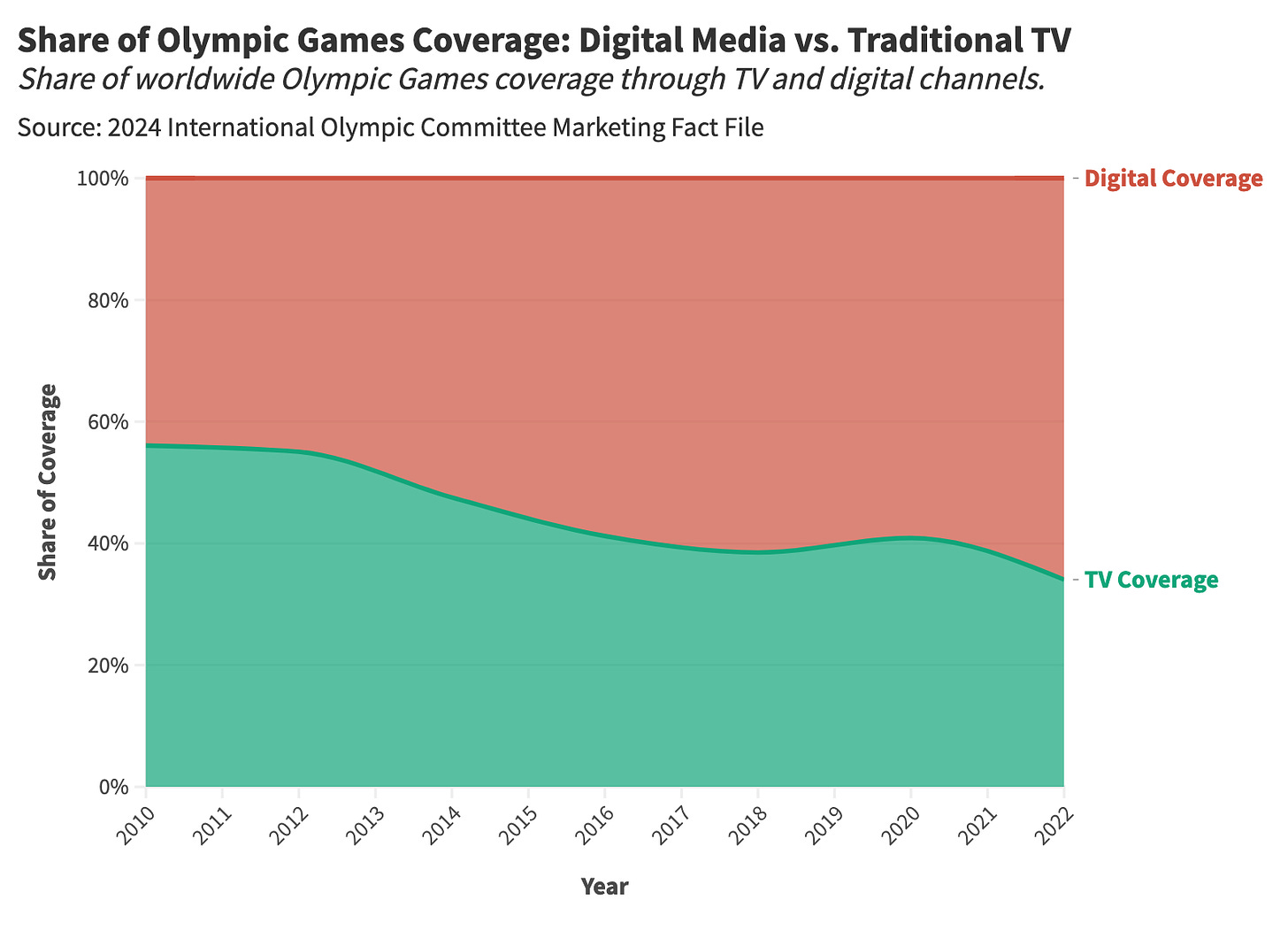
In response, the International Olympic Committee started listing "video views" in its marketing materials, highlighting the 28 billion digital clips consumed during the 2020 Tokyo Games.
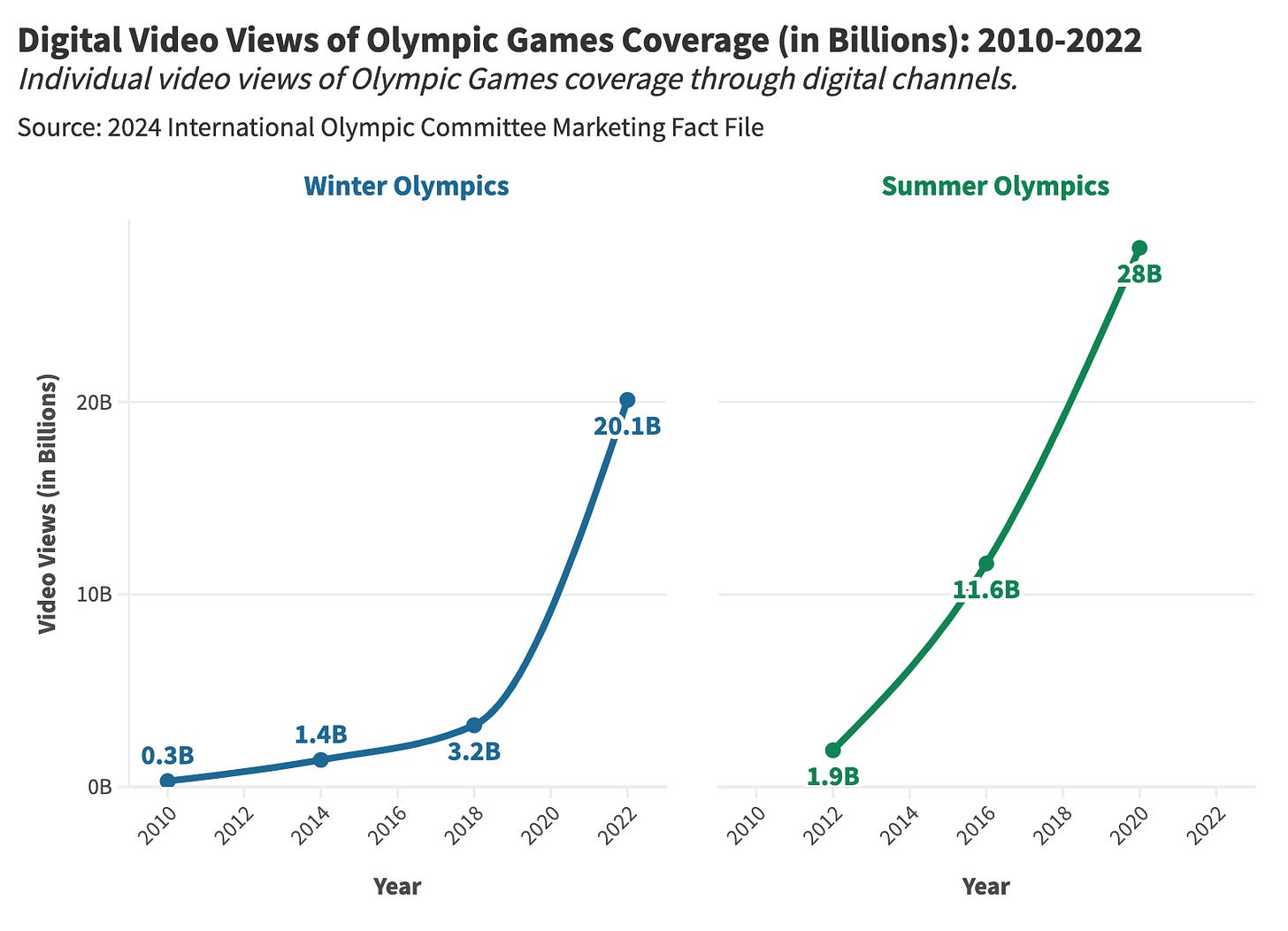
The Olympics have maintained their status as a monocultural event, but viewership has become increasingly fragmented. It's more common to watch a two-minute video of the winning gymnastics routine than to watch the gymnastics medal event in its entirety. For better or worse, the games now exist as a collection of moments—a highlight reel of athletic achievement. This phenomenon explains why broadcasting revenues are slowing, even as the IOC produces more content and sees increased partnership revenues.
By expanding coverage, the Olympics creates more content to be distributed online, and this increased digital footprint garners eyeballs, which begets more sponsorship dollars. Sure, viewership may be shrinking, but it's not declining as rapidly as most other media properties.
Even with significantly diminished viewership for the 2020 Tokyo Games, the Olympics was still one of the most-watched media events in human history, matched in scale by royal weddings and global soccer finals.
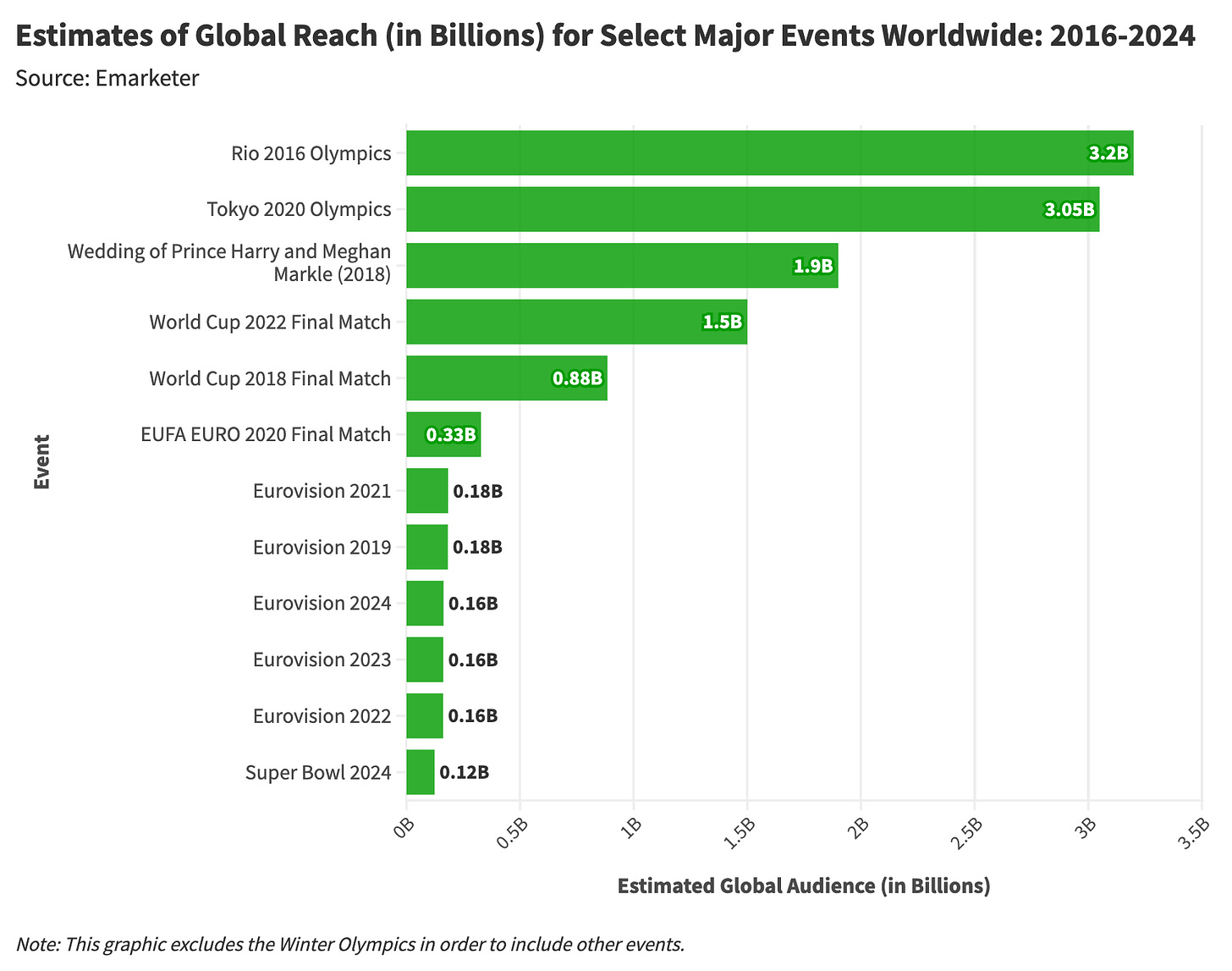
In a world of endless entertainment, the Olympics remain an odd outlier, defined by heightened spectacle and universal reach—even if what defines "reach" is ever-changing.
Final Thoughts: The Inferiority of "Can't-Miss TV"

Footage from “The Nancy Kerrigan Attack.” Credit: ABC News.
Growing up, my family (especially my mom) loved watching the Olympics. For two weeks, our TV was constantly tuned to live coverage. Oftentimes, someone from our family would park themselves in front of the television, watching live coverage and beckoning other family members whenever something consequential was set to occur. This person served as a sacrificial lamb, ensuring "can't-miss TV" wasn't, well, missed.
At first pass, this childhood memory wreaks of nostalgic longing—it's fashionable to miss the inconvenience of linear programming. But, honestly, even with distance and a soft spot for childhood experience, I think this setup was pretty terrible. Watching the Olympics live is defined by twenty minutes of color commentary for every ten minutes of athletics, as broadcasters stall for time in between events. And if you don't want to watch badminton or handball? Too bad—you are watching badminton and handball. You know why people watch clips on social media (versus the live feed)? Because you can experience the exhilaration of the Olympics while also saving time. In the past, I've written about missing monocultural television broadcasts—instances where everyone watched the same thing at the same time—but in this case, I genuinely believe watching highlights on TikTok is preferable.
And this brings us full circle to the Tanya Harding - Nancy Kerrigan scandal—a harbinger for future Olympics coverage. Do you know why tens of millions of Americans tuned in to the 1994 Games? Because people love melodramatic spectacle. America's leading figure skater got hit in the leg with a metal rod, and people wanted to see what would happen next. For better or worse, the digitization of the Olympic Games streamlines the consumption of heightened drama, allowing viewers to bypass color commentary, inconsequential qualifying rounds, and lame events like racewalking.
Many of the greatest Olympic moments—like Mary Lou Retton's one-footed vault landing, The Miracle on Ice, and Usain Bolt's iconic celebrations—are just that, moments. These memories exist as snapshots, forever lodged in our brains. Viewing the games in five-minute clips on YouTube (versus a three-hour primetime broadcast) brings us closer to what we actually want.
Thanks for reading Stat Significant! Subscribe for free to receive new posts and support my work.
Want to chat about data and statistics? Have an interesting data project? Just want to say hi? Email [email protected]